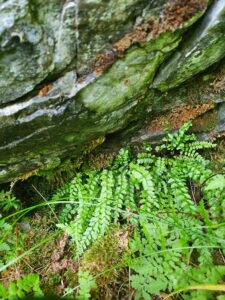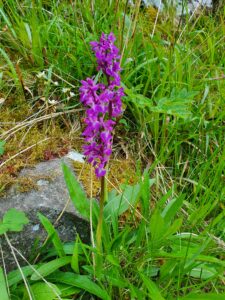2022 County Report for Peeblesshire
Luke Gaskell
I continue to concentrate on the under recorded parts of Peeblesshire with some exceptions for urban areas and parts of the county that are being afforested. I recorded 3638 plants with 519 individual species and sub-species in monads during 32 days of field work last year.
One problem that has arisen is how to distinguish between species that have been deliberately planted or sown compared to those that have arrived naturally or spread unintentionally. For example, Crassula tillaea (Mossy Stonecrop) is a native of southern England, but is now spreading north and often found in car parks. It arrived at the Station Road car park in Peeblesshire and survived for a few months, before falling victim to the councils ongoing war on street weeds. Curiously its spread has been associated with railway stations in the north, but the railway in Peebles is long gone.
Another example is the annual Agrostemma githago (Corncockle) that I found growing amongst nettles on a road verge and recorded as an introduction. However, with global warming it is possible that it is setting viable seed and hence could now persist naturally.
Finally I find the afforestation of Gameshope estate concerning. I am recording the change of species related to the new regime of moving from sheep to trees. Some of the species planted have never been recorded in Peeblesshire and hence are of note. At present Orchis mascula, (Early-purple Orchid), Trollius europaeus (Globeflower) and Asplenium viride (Green Spleenwort) are doing well on this estate, it will be interesting to monitor their continuing success.

